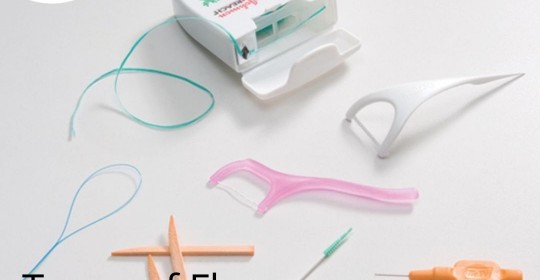
Dental Floss
There are many forms of dental floss including waxed, unwaxed but the main difference between available dental flosses is thickness and widths.
There are factors that need to be considering when choosing the best dental floss for you
1. The tightness of the contact area: determines the width of floss.
2. The contour of the gingival tissue.
3. The roughness of the interproximal surface.
4. The client’s manual dexterity and preference: to determine if a supplemental device is required
If you are uncertain, about which type of floss works for you ask your dentist for professional guidance.
Types of Dental Floss:
| Waxed floss | Traditional string floss, Nylon waxed Monofilament floss also available coated in polytetrafluoroethylene (PTFE), Does not fray |
| Unwaxed floss | Traditional string floss, Unwaxed, multifilament |
| Dental tape | Waxed floss that has a wider and flatter design to conventional floss |
| Tufted/braided dental floss/ Superfloss | Regular diameter floss, wider tufted portion looks like yarn. Tip of product also resembles a threader |
| Floss holder | Handle with two prongs in Y or F Shape |
| Floss threader | A nylon loop designed to resemble a needle with large opening to thread floss. Tip of floss threader inserted and pulled through the space between two teeth to allow cleaning of the teeth sides |
| Threader-tip floss | A length of floss with an attached threader tip. |
| Power flossers | Bow type tip and Single filament nylon tip |

Leave a reply